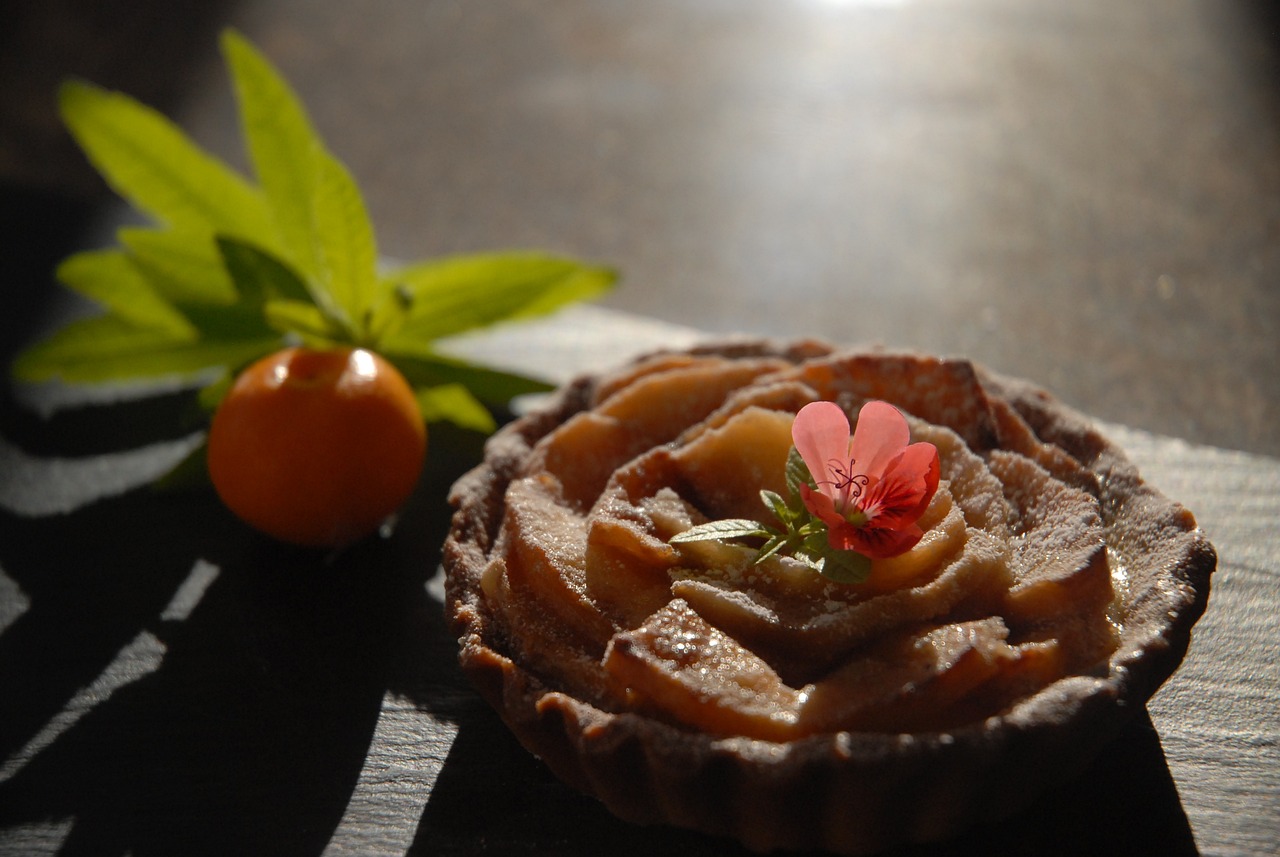French Coq au Vin: Red Wine-infused Chicken Dish

French Coq au Vin is a classic and flavorful chicken dish that has been a staple in French cuisine for centuries. This hearty stew is braised in red wine, infusing the chicken with rich and robust flavors that are sure to tantalize your taste buds. Let's delve into the world of Coq au Vin and uncover the secrets behind this beloved French delicacy.
- Origins rooted in French culinary traditions
- Evolution of the dish over the centuries
Coq au Vin is not just a meal; it's a culinary journey through history, with each bite telling a story of tradition and innovation. The combination of tender chicken, aromatic vegetables, and fragrant herbs simmered in red wine creates a symphony of flavors that explode in your mouth with every spoonful. Get ready to embark on a gastronomic adventure like no other as we unravel the mysteries of Coq au Vin.
History of Coq au Vin
When delving into the history of Coq au Vin, we are transported back to the heart of French culinary traditions, where this iconic dish has deep roots. Originating as a humble peasant dish in the Burgundy region of France, Coq au Vin has evolved over the centuries to become a celebrated classic in French cuisine.
The dish's name itself, "Coq au Vin," translates to "rooster in wine," reflecting its rustic origins where tough roosters were slow-cooked in wine to tenderize the meat. Over time, the dish transitioned to using chicken as the primary protein, making it more accessible and widely enjoyed.
Legend has it that Coq au Vin traces its roots back to Julius Caesar's invasion of Gaul, where the Gauls cooked rooster in wine to celebrate their victory. This historical anecdote adds a layer of intrigue to the dish, connecting it to ancient traditions and conquests.
Throughout history, Coq au Vin has been prepared in various ways, with each region of France putting its own spin on the recipe. From the choice of wine to the selection of herbs and vegetables, every adaptation tells a story of local flavors and culinary preferences.
Ingredients and Preparation
When it comes to preparing the classic French dish of Coq au Vin, the key lies in selecting the right ingredients and following the traditional preparation methods. Let's delve into the essential components that make this dish so flavorful and satisfying:
- Chicken: The star of Coq au Vin is, of course, the chicken. Traditionally, this dish is made with chicken pieces on the bone, such as thighs and drumsticks, which add richness to the stew.
- Red Wine: The defining element of Coq au Vin is the red wine braising liquid. Choose a full-bodied red wine like Burgundy or Pinot Noir to infuse the dish with deep, complex flavors.
- Vegetables: Onions, carrots, and mushrooms are commonly used in Coq au Vin to enhance the savory profile of the dish. These vegetables add texture and depth to the stew.
- Herbs and Spices: A bouquet garni, typically consisting of thyme, parsley, and bay leaves, is essential for infusing the stew with aromatic flavors. Additionally, garlic, salt, and pepper are used to season the dish.
Now, let's walk through the preparation process of Coq au Vin step by step:
- Marinate the Chicken: Start by marinating the chicken pieces in red wine, along with chopped onions, carrots, and herbs. Let the chicken soak up the flavors for at least a few hours or overnight.
- Sear the Chicken: In a large Dutch oven or skillet, sear the marinated chicken pieces until they develop a golden-brown crust. This step helps lock in the juices and intensify the flavors.
- Caramelize the Vegetables: Remove the chicken from the pot and caramelize the onions, carrots, and mushrooms until they are golden and fragrant. This adds a rich depth of flavor to the stew.
- Deglaze with Wine: Deglaze the pot with more red wine, scraping up the browned bits from the bottom to incorporate all the flavorful residues into the sauce.
- Braise and Simmer: Return the chicken to the pot, add the bouquet garni, and simmer the stew gently until the chicken is tender and the flavors have melded together beautifully.
Once the Coq au Vin is ready, serve it hot with your choice of accompaniments, such as crusty bread, mashed potatoes, or buttered noodles. The rich flavors of the stew pair wonderfully with a glass of the same red wine used in the cooking process, enhancing the overall dining experience.
Experimenting with Coq au Vin allows for creative variations and modern twists on the traditional recipe. Whether you opt for different herbs and spices, alternative cooking methods like slow cooking or pressure cooking, or innovative presentations that elevate the visual appeal of the dish, there are endless possibilities to put your own spin on this beloved French classic.
Serving and Pairing Suggestions
When it comes to serving and pairing Coq au Vin, there are numerous delicious options to enhance the experience. Whether you're hosting a dinner party or simply cooking for yourself, the right accompaniments can elevate this classic French dish to new heights. Let's delve into some serving and pairing suggestions that will surely impress your taste buds.
First and foremost, a traditional way to serve Coq au Vin is with a side of crusty bread. The hearty stew pairs perfectly with the crunchy texture of the bread, allowing you to soak up every last bit of the rich sauce. Additionally, mashed potatoes are another popular choice to serve alongside the tender chicken and flavorful sauce.
For wine pairing, the robust flavors of Coq au Vin call for a wine that can stand up to its bold taste. A classic choice would be a red Burgundy or Pinot Noir, which complement the dish's earthy notes and enhance the overall dining experience. The wine's acidity and fruitiness can balance out the richness of the stew, creating a harmonious combination.
If you prefer white wine, a Chardonnay with a bit of oakiness can also work well with Coq au Vin, providing a different yet equally enjoyable flavor profile. The buttery notes of the Chardonnay can add a touch of elegance to the meal, creating a sophisticated dining experience.
When it comes to serving, presentation is key. Consider garnishing your Coq au Vin with fresh herbs like parsley or thyme to add a pop of color and freshness to the dish. You can also serve it in individual ramekins for a more elegant presentation, perfect for a special occasion or dinner party.
Lastly, don't forget about the importance of balance when serving Coq au Vin. The dish itself is rich and flavorful, so it's essential to pair it with sides and wines that complement rather than overpower its taste. By paying attention to the details of serving and pairing, you can create a memorable dining experience that will leave your guests impressed and satisfied.
Variations and Modern Twists
When it comes to Coq au Vin, there is no shortage of creative variations and modern twists that can elevate this classic dish to new heights. Whether you're looking to experiment with different flavors or add a contemporary flair to the traditional recipe, there are plenty of exciting options to explore. Here are some innovative ideas to inspire your culinary adventures:
- Ingredient Substitutions: One way to put a modern spin on Coq au Vin is to experiment with ingredient substitutions. Consider using duck or turkey instead of chicken for a unique twist on the dish. You can also swap out the traditional red wine for white wine or even beer to create a different flavor profile.
- Cooking Methods: Shake things up by trying out alternative cooking methods for Coq au Vin. Instead of braising the chicken on the stovetop, you could prepare it in a slow cooker or pressure cooker for a convenient and hands-off approach. Roasting the chicken in the oven before adding it to the wine sauce can also add depth of flavor.
- Innovative Presentations: Presentation can make a big impact on the overall dining experience. Consider serving individual portions of Coq au Vin in mini cocottes or ramekins for a charming presentation. You could also deconstruct the dish and serve the components separately for a modern twist on the classic presentation.
By thinking outside the box and experimenting with different ingredients, cooking techniques, and presentations, you can put your own unique stamp on the timeless Coq au Vin recipe. Don't be afraid to get creative in the kitchen and let your culinary imagination run wild!



 HazalVardal
HazalVardal 





